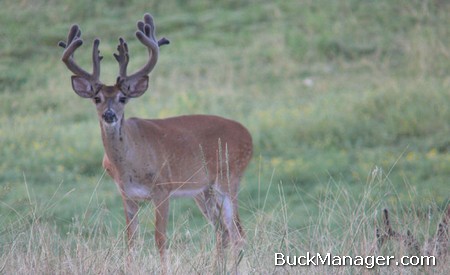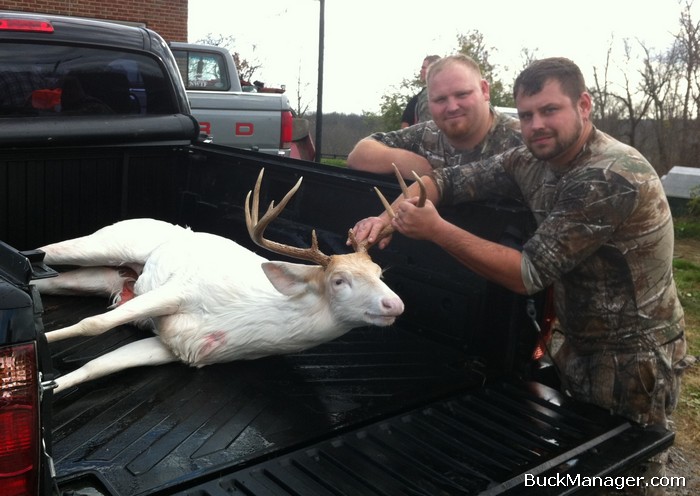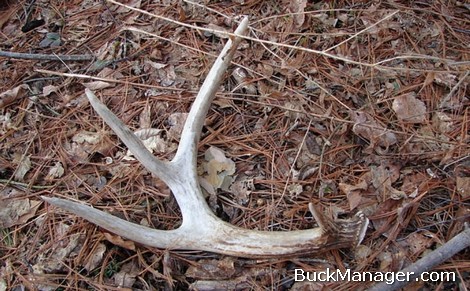The breeding of white-tailed deer has been a controversial issue from the very beginning. After all, the commercialization of any game animal is always a touchy subject. To add gasoline to the fire, almost all breeder deer are produced, grown and harvested behind high fences – another subject of debate in many hunting circles. Even though deer breeding and all of the activities associated with it are legal based on state regulations, the whole situation does not sit right with a number of deer hunters.
Enter the Quality Deer Management Association. The QDMA is well known, especially throughout the Southeastern US, for providing information on deer management and is a long-time supporter of increased antlerless deer harvest. This organization has made inroads with deer hunters and landowners over the years by providing guidance on population and habitat management for white-tailed deer. Now the QDMA is taking a stance on whitetail deer breeding in the US: They do not like it.

QDMA: “The Quality Deer Management Association (QDMA) is urging hunters in seven states to oppose the expansion of the deer breeding industry, which QDMA perceives as a growing threat to wild deer and the deer hunting heritage. Legislation designed to loosen or dismantle regulatory barriers to white-tailed deer breeding and farming is being considered in Georgia, Indiana, Mississippi, Missouri, North Carolina, Tennessee and West Virginia.
“There are no benefits for deer hunters in the growth of the captive deer breeding industry – only risks,” said Kip Adams, QDMA’s Director of Education & Outreach and a certified wildlife biologist. “It is QDMA’s mission to protect the future of white-tailed deer and our hunting heritage, and we oppose anything that puts those at risk.”
In opposing the proliferation of “deer breeding,” QDMA is referring to captive deer facilities where controlled, artificial breeding technology is used primarily to produce whitetail bucks with enormous, often grotesque antlers – an industry that includes sales of semen, artificially impregnated does, and live bucks to other breeders or to captive deer shooting facilities. Current estimates suggest there are nearly 10,000 deer breeding operations in North America, and the number is growing as the industry pushes to expand into areas where it was historically not legal.
“Some argue this is an innocent endeavor with no negative impacts to wild deer or the everyday deer hunter. As CEO of North America’s leading whitetail conservation organization, I emphatically and unapologetically disagree,” said Brian Murphy, QDMA’s Chief Executive Officer. “Not only does this industry undermine the North American Model of Wildlife Conservation in which wildlife is a public resource, it also threatens the health of wild deer and the public’s perception of hunting.”
The distribution map of chronic wasting disease (CWD) – a fatal disease of deer and elk – suggests the disease likely arrived in several new states through transportation of live deer, either legally or illegally, and not through natural deer movements. Legalizing deer breeding in new areas increases the incentive for illegal transportation of untested animals at a time when these human-aided movements must be stopped. Transporting any captive whitetails is risky, as there is no acceptable and practical live-animal test for CWD in deer. Once CWD appears in wild deer in a new area, slowing the spread of the disease requires costly investigation, testing and surveillance efforts for many years and often requires drastic reductions in deer populations. There is currently no known way to decontaminate an environment once CWD is present.
In more than 40 states, regulatory authority over captive deer facilities is held by state agriculture agencies, or shared between agriculture and wildlife agencies. QDMA recommends that wildlife agencies have sole responsibility because they have more experience with wildlife species and wildlife disease issues, and they fully understand what is at stake with regard to transmission of diseases like CWD to free-ranging deer.
“QDMA’s current effort is to halt expansion of the deer breeding industry,” said Adams. “We also want sole jurisdiction for existing facilities to remain with or be reassigned to state wildlife agencies. Considering the implications for our hunting heritage, we can’t afford to allow this industry to expand. The ramifications of being wrong are simply too great.”
QDMA is currently urging resident hunters to oppose existing or potential legislation in the following states:
Georgia: House Bill 1043 – Legalizes the importation of live whitetails into Georgia for breeding purposes and creates a permitting system for deer-breeding operations, all under the jurisdiction of the state Department of Agriculture. Current status: House second-readers as of February 22.
Indiana – House Bill 1265 – Provides for the licensing and operations of hunting preserves on which farm-bred, captive deer and elk will be hunted. Current Status – Senator David Long (President Pro Tempore) refused to hear the bill. It remains in committee.
Mississippi – Senate Bills 2554 and 2555 – Legalizes importation of captive deer, semen and embryos and authorizes deer breeding facilities, under the jurisdiction of the state agriculture department. Current Status – Both bills referred to Wildlife, Fisheries and Parks Committee on February 20.
Missouri – House Bill 1375 – Adds deer to the definition of “livestock” for the purposes of the state sales and use tax law, meat inspection law, Missouri Livestock Disease Control and Eradication Law, and the Missouri Livestock Marketing Law. Current Status – House second-readers as of February 22.
North Carolina – Currently at the proposal stage; no bill number yet. The spoken intent is to loosen regulations to allow for expansion of the captive deer industry. A QDMA staff member will attend a board meeting with the North Carolina Wildlife Resources Commission in Raleigh on March 7 on this topic.
Tennessee – House Bill 3164 – Present law classifies white-tailed deer as Class IV wildlife, which may only be possessed by zoos, temporary exhibitors, and rehabilitation facilities. This bill adds authorization for possession of white-tailed deer by breeding facilities that receive a permit from the Department of Agriculture to breed or ranch such livestock for purposes determined by the Department. Current Status – Placed on calendar for Agriculture Committee for March 6.
West Virginia – Senate Bill 421 – Captive Cervid Farming Act – Transfers regulatory authority over captive white-tailed deer facilities from the Division of Natural Resources (DNR) to the Department of Agriculture. Current Status – referred to Rules Committee on February 17.
Texas: In my home state, white-tailed deer breeding has become common place, with well over 1,000 registered breeder operations. It’s important to reiterate that deer breeders can only start a breeding facility by buying deer from other registered breeding operations. The rearing of pen-raised deer is one thing, but I suspect the QDMA is more concerned about how those animals are handled (hunted) after the leave a commercial facility. Is the idea and the heritage of “deer hunting” threatened by shooting pen-raised animals?



